Alexandra of familymobileapps.com left me a comment that said, “I love your specific lists! ![]() So, I wonder if Poland themed books for kids is too big or too little a challange for you?
So, I wonder if Poland themed books for kids is too big or too little a challange for you? ![]() ”
”
So I thought, “No problem. I’ll research.”
But what I found was a striking lack of diversity in Polish themed books for kids: folktales and Holocaust and that’s about it! I think this is possibly worse than Japanese American books for kids which seem to singularly focus on WWII internment.
Can you please help me identify more books? As for my list, here are my folk tales and Holocaust books about Poland for kids.
10 Books About Poland for Children
10. Seedfolks by Paul Fleishman and illustrated by Judy Petersen
… is an exception. I just happened to be reading this after PickyKidPix recommended it and checked it out at the library. Set in inner-city Cleveland, a rough neighborhood is transformed after a little girl dares to clear a patch in a garbage-strewn vacant lot to plant a handful of lima bean seeds. Her neighborhood had undergone waves of transformation as new immigrants settled in and then moved out if they could afford to. Once full of Polish immigrants, only a few Caucasians remained but this particular elderly Polish lady plays a pivotal role in getting the lot transformed. An oblique reference to Poland, to be sure, but I wish there were more books with Polish American characters. [short story middle grade, ages 10 and up]
9. The Snowy Day by Ezra Jack Keats
I’m counting one of my favorite picture book authors, Ezra Jack Keats, because of his Polish heritage and the fact that he had to hide it. Adding him to this list helps to even things out I’m hoping!
Keats, the son of Jewish Polish immigrants, was born in 1916 and brought up in Brooklyn, New York. He was originally named Jacob Ezra Jack Katz; there is speculation that when he legally changed his name to Ezra Jack Keats two years after World War II, it was as a result of the anti-Semitism at that time.
8. Polish Fairy Tales by A. J. Glinski
7. Polish Folktales and Folklore (World Folklore Series) by Michal Malinowski and Anne Pellowski
6. The Silver Sword by Ian Serraillier
The dramatic story of three Polish children during and just after World War II, whose parents are taken away by the Nazis and their house blown up. The children manage to escape over the rooftops and join the gangs of orphans living in the ruins of the bombed city, existing as best they can. The “silver sword” is only a paper knife, but it is the talisman that, after the Germans have been driven out of Warsaw, gives Ruth, Edek, and Bronia the hope and courage to make an astonishing journey across Europe with their friend Jan until they reach a refugee camp where they are reunited with their parents.
5. Polish Fables by Ignacy Krasicki
4. The Hundred Dresses by Eleanor Estes
The book centers on Wanda Petronski, a poor and friendless Polish-American girl. Her teacher, outwardly kind, puts her in the worst seat in the classroom and she does not say anything when her schoolmates tease her. One day, after Wanda’s classmates laugh at her funny last name and the faded blue dress she wears to school every day, Wanda claims to own one hundred dresses, all lined up in her closet at her worn-down house.
This is one of my favorite chapter books and I had forgotten that Wanda was Polish until I ran searches for Polish girls in children’s books. Her story exemplifies the racism that Poles faced in America, both adults and children. As the victim of girl bullying, Wanda’s father finally moves the family to a new city as a direct result of her experience at school. Based on a real-life experience, author Eleanor Estes was haunted by being a bullying bystander and wrote this book.
3. The Life of St. Queen Jadwiga (1374-1399) by Zycie Swietej Jadwigi Krolowej
In words and pictures, this children’s coloring book tells the story of Queen St. Jadwiga through the highlights of her life. Text in English and Polish.
2. Rodzina by Karen Cushman
Rodzina Clara Jadwiga Anastazya Brodski’s story begins in Chicago, in 1881, as she is about to board a railroad car on an orphan train, as they were known…In her prologue, Cushman describes visiting her great-grandmother’s grave and reading ”Rodzina Czerwinski” on the stone. Rodzina means ”family,” and this book, she says, is about the search for a family. She has created a delightful, thoroughly Polish, heroine. But the orphan train, the enormous other half of the story, is curiously incomplete. NY Times review. From Polish Art Center. [chapter book, ages 10 and up]
1. An Ellis Island Christmas by Maxine Rhea Leighton
Papa has already left Poland, and Krysia longs to see him again. “First we must cross the ocean to get to Ellis Island in America,” says Mama. “That’s where Papa is waiting for us.” Saying goodbye to her home is hard, and the ocean voyage is long and stormy, but finally, on Christmas Eve, Krysia sees the Statue of Liberty! Dennis Nolan’s richly rendered illustrations powerfully evoke the uncertainty, wonder, and hope of this young immigrant’s experience. An Ellis Island Christmas is a holiday story to treasure, year after year. From Carol Hurst’s Blog. [picture book, ages 5-8]
Holocaust Chapter Books Set in Poland
The Boy on the Wooden Box by Leon Leyso
Leon Leyson (born Leib Lezjon) was only ten years old when the Nazis invaded Poland and his family was forced to relocate to the Krakow ghetto. With incredible luck, perseverance, and grit, Leyson was able to survive the sadism of the Nazis, including that of the demonic Amon Goeth, commandant of Plaszow, the concentration camp outside Krakow. Ultimately, it was the generosity and cunning of one man, a man named Oskar Schindler, who saved Leon Leyson’s life, and the lives of his mother, his father, and two of his four siblings, by adding their names to his list of workers in his factory—a list that became world-renowned: Schindler’s List.
The Endless Steppe: Growing Up in Siberia by Esther Hautzig
Because they are Jews, Esther and her family are considered enemies of the people and exiled to Siberia. The father is separated from them and sent to a slave labor camp. When they finally are allowed to return to Poland, they find that their extended family has been killed by the Nazis. From Carol Hurst’s Blog. [chapter book, ages 9 and up]
Irena Sendler and the Children of the Warsaw Ghetto by Susan Goldman Rubin, illustrated by Bill Farnsworth
The story of a Polish woman who helped over 400 Jewish children escape Nazi-occupied Warsaw is presented in a sophisticated, evocative, realistically illustrated picture book format. Source notes and additional resources conclude this riveting account. [picture book, ages 6 and up]
After the War by Carol Matas
This novel follows a fifteen-year-old girl, Ruth, after her release from the concentration camps. When she attempts to return to her home in Poland, she is chased away by its present inhabitants. Joining the underground, she helps children with forged documents to enter Palestine. From Carol Hurst’s Blog. [young adult, ages 12 and up]
The Island on Bird Street by Uri Orlev
Alex’s mother has disappeared. His father was taken away by the Nazis. Alex must survive on his own in the Warsaw ghetto. From Carol Hurst’s Blog. [chapter book, ages 10 and up]
Surviving Hitler: A Boy in the Nazi Death Camps by Andrea Warren
Jack Mandelbaum had lived a comfortable life in Poland before the Holocaust began. After hiding for a while, his family was separated and Jack was sent to Blechhammer. This is his story of survival there. From Carol Hurst’s Blog. [middle grade, ages 10 and up]
The Harmonica by Tony Johnston, illustrated by Ron Mazellan
Given a harmonica from his coal-miner father in Poland, the child learns to play it before he is taken from his family and sent to the camps. There he is ordered by the commandant to play Schubert. Even beautiful music cannot hide or change the cruelty. From Carol Hurst’s Blog. [picture book, ages 8 and up]
Someone Named Ava by Joan M. Wolf
In 1942, Milada is taken, along with other blond, blue-eyed children, to a school in Poland to be trained as proper Germans in order to be adopted by German families. I liked how it showed another side of the Nazi horrors. Usually, Holocaust books are about the concentration camps, but this one is different. Although it is less harsh than many other books on the Holocaust, it affected me most because I can almost understand her fear and confusion. This book is that emotional and effective, said Sudeshna (6th grade). from Avon Middle School High School Library
Boy in the Striped Pajamas by John Boyne
This chapter book is set in Berlin, 1942. When Bruno returns home from school one day, he discovers that his belongings are being packed in crates. His father has received a promotion and the family must move from their home to a new house far far away, where there is no one to play with and nothing to do. A tall fence running alongside stretches as far as the eye can see and cuts him off from the strange people he can see in the distance. But, Bruno longs to be an explorer and decides that there must be more to this desolate new place than what meets the eye. While exploring his new environment, he meets another boy whose life and circumstances are very different from his own, and their meeting results in a friendship that has devastating consequences. [young adult, ages 12 and up]
These were from The Best Children’s Books
The Cats in Krasinski Square by Karen Hesse
Set in Poland during WWII, this is a little-known true story of Jewish resistance, stray cats, and a little Jewish girl who outfoxed the Nazis to deliver food to starving residents in the Warsaw Ghetto. Perfectly paired with Watson’s “arresting images.” [picture book, ages 7-10]
In My Hands: Memories of a Holocaust Rescuer by Irene Gut Opdyke
This inspiring memoir tells of the experiences of Irene Gutowna, a 17-year-old Polish nursing student who found every opportunity she could to help the Jews living in Nazi-occupied countries, first leaving food for those in the ghetto, then protecting and hiding Jews who worked with her. School Library Journal urges that regardless of whether you have read many Holocaust memoirs, “this one is a must, for its impact is so powerful.” From School Library Journal. [middle grade, ages 10 and up]
Yellow Star by Jennifer Roy
Sylvia, the author’s aunt, was four years old when her family was sent to the Lodz ghetto in wartime Poland, and six years later she was one of only 12 children who survived it. The slightly fictionalized story is told in almost poetic prose, in vignettes that each recall a particular memory in Sylvia’s life. “A standout in the genre of Holocaust literature.” From School Library Journal. [middle grade, ages 10 and up]
Escape from Warsaw by Ian Serraillier
Warsaw 1942 – Dad’s in prison. Mother’s about to be arrested. Edek, enraged, shoots one of the Nazi Storm Troopers. Now Edek and his two sisters must escape – and fast! Leaving their bombed house, they flee across rooftops, the Secret Police already on their trail. A harrowing story of three young fugitives and their Nazi pursuers . . . taken from true accounts. [young adult, ages 12 and up]
Polish Characters in Children’s Literature
Magneto in X-Men
I think Magneto was born in Germany, and his family only fled to Poland after Kristallnacht. from ComicVine
Thank you to Ms. Yingling Reads for The Button War:
The Button War: A Tale of the Great War by Avi
From Ms. Yingling Reads:
“Patryk lives in a small Polish town in 1914. The Russians have been in control for a number of years, but rumor has it that German soldiers are on their way. When a newfangled aeroplane blows up the school, everyone knows that war is on its way. Jurek, whose family is poor, becomes interested in buttons from soldiers’ coats after finding one in an abandoned castle in the woods. He makes up a contest, with a cane as the prize, and says that whoever has the most interesting buttons will be the king. Patryk’s friends, boys of the same age but sometimes different backgrounds, all go about getting buttons in a variety of dangerous ways. Some take the buttons off uniforms that a sister is laundering, others cut them off clothes that are hanging on the line. As the war closes in, buttons are even taken off of dead soldiers. There are seven boys at the beginning, but as both “wars” continue, some are killed in various altercations with the military, and it is even suspected that Jurek has killed one. Is he really unbalanced? Patryk’s family eventually decides they must leave, but Jurek and the button war stay with Patryk in disturbing ways.” [chapter book, ages 9 and up]
Thank you to Erica of What Do We Do All Day for her great book suggestion! Yay! We got one more!!
The Trumpeter of Krakow by Eric P. Kelly, illustrated by Janina Domanska
This won the Newbery Award in 1928.
Centered around the historical fire that burned much of Kraków in 1462, The Trumpeter of Krakow tells the fictional story of a family of Joseph Charnetski, a Polish noble family from Kresy (modern day Ukraine), who fled to Kraków, Poland, in 1461 after their home is burned to the ground by the Cossack-Tartars of Bogdan Grozny, commonly known as “Peter of the Button Face” because of the button-shaped pockmark on his cheek. Wikipedia
Eric P. Kelly, a student of Slavic culture for most of his life, wrote The Trumpeter of Krakow while teaching and studying at the University of Krakow. During five years spent in Poland, he traveled with an American relief unit among the Poles who were driven out of Ukraine in 1920, directed a supply train at the time of the war with the Soviets, and studied and visited many places in the country he came to love so well. A newspaperman in his native Massachusetts in his younger days, Mr. Kelly later wrote many magazine articles and several books for young people. He died in 1960.
Please click on image of book to view more closely at Amazon.
As an Amazon Associate, I earn from qualifying purchases.
A Holocaust Survivor’s Compassionate Message To Germans
Emery Jacoby is a 90-year-old Holocaust survivor who recently participated in a question-and-answer session on Reddit. After receiving a huge and deeply supportive response from Germany’s youth, Jacoby made this brilliant video for his young friends.
p.s. Related posts:
Book Lists for a Particular Location
- Africa
- Appalachia
- Bangladesh
- Boston
- Chicago
- China
- Egypt (Ancient)
- Florida
- Immigrating
- Laos
- Museums
- Japan
- Paris
- Poland
- Rainforest
- Sri Lanka
- Undocumented Immigrant
- Vietnam
BEST #OWNVOICES CHILDREN’S BOOKS: My Favorite Diversity Books for Kids Ages 1-12 is a book that I created to highlight books written by authors who share the same marginalized identity as the characters in their books.



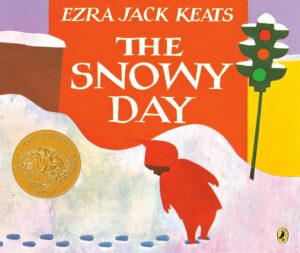


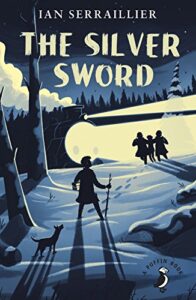











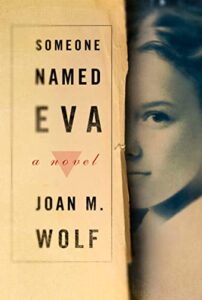

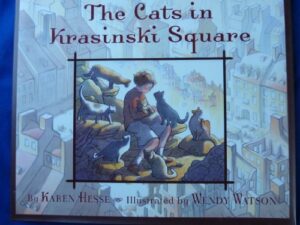






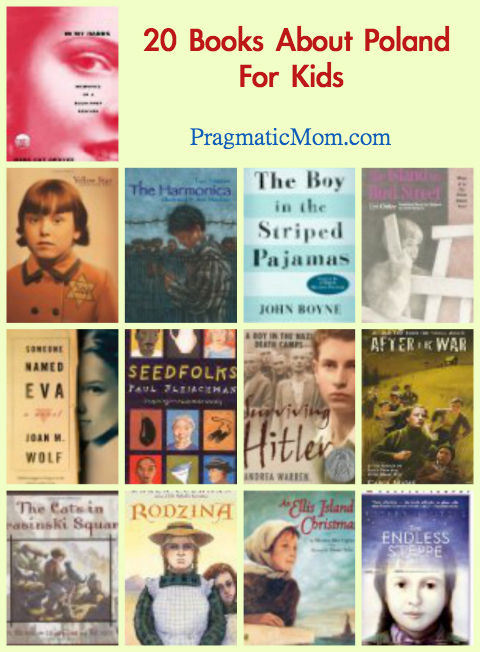





Wow! Thank you so much for this M, I really didn’t think you could find that many! 🙂
As we have talked before, it’s rather sad that the main topics include Holocaust and folk tales – I mean, yeah, sure, these are really important parts of Polish history/culture but not the only ones. My country is so much more than that (oh, I bet every country is more than that!). Unfortunately I am not really sure what to add to the list to make it another exception – I have the privilege of read everything in Polish though 😉
I am curious about other comments – hope there still are some nice books just waiting to be found!
Hi Alexandra,
My hope is that Polish American children’s authors out there will start to include Polish characters in the books that they write. I hope readers will come up with a few more book suggestions too. It’s a little disheartening that there are such strong misconceptions of Poles (Polack jokes) that is contributed, in part, to the lack of books that portray them in a full way. The body of work shows Poles as victims of the Holocaust or of poverty. While this may be a part of the Polish history, it’s such a small part. I guess Poles must have assimilated pretty successfully after immigrating to America such that their identify in childen’s books is so narrow.
It’s pretty funny that you added the snowy day to a list of polish books
Hi Faigie,
You can tell that I am reaching! I know, right? There are so few Polish American characters in children’s books. It’s as if the Poles want to disappear and assimilate into American culture much like Ezra Jack Keats felt he had to do in order to become successful.
How about a book about Polish scientist Marie Curie?
Hi Maryanne,
Thanks for your great book suggestion. I didn’t realize Marie Curie was Polish!
We’ve read “The Cats of Krasinksi Square” a few times. Dylan was much younger and I don’t think he fully understood it, but he kept getting it at the library.
Hi Dee,
I haven’t read “The Cats of Krasinksi Square” yet but I heartened that Dylan liked it! I wonder what he thinks of it now. Would he read it now and leave me a comment?
Wow! What a wonderful resource! I was born in Poland and would be very interested in reading these books. I am only familiar with one. Thank you! Or I should say- dziękuję!
Do you speak Polish then? I rarely see anyone of Polish descent in the blogosphere 😉
And where exactly in Poland were you born?
Pozdrowienia 🙂
Cześć Alexandra!
Tak, rozmawiam po Polsku. Urodziłam się w Warszawie i przyjechałam do Ameryki jak miałam siedem lat- bardzo dawno! A kiedy Pani przyjechała, i skąd?
Hi Iza,
Thanks for your comment. What fun to see the Polish language on my blog!
I’m glad you enjoyed it! Here’s the translation:
Yes, I speak Polish. I was born in Warsaw and came to America when I was seven- a long time ago! And where are you from? 🙂
Hi Iza,
Thanks for the translation!
Pani Izo, ja nie mieszkam w Stanach, obecnie podrozuje pomiedzy Polska i Wielka Brytania, gdzie mieszka moj narzeczony 🙂
A pochodze z Wielkopolski, Poznan 🙂
Milo przeczytac, ze nie zapomniala Pani naszej trudnej mowy…;)
Dziękuje, Pani Alexandro! Nie zapomniałam mowy ale często kaleczę 🙂 Moja siostra mieszka po za Warszawą i roymiawamy często na skype. A brat mieszka w Kanadzie ale on tylko chce rozmawiać po Angielsku. Życzę Pani wszystkiego najlepszego! Kiedy ślub?
Hi Iza,
I’m so glad that you are commenting in Polish! And thank you also for your translation!
Hi Alexandra,
Thanks so much for your comment. What does that mean?
Hi Alexandra,
What fun to watch you connect!
Hi Iza,
My pleasure! I am hoping to discover more children’s books myself that have Polish American characters in them. Or maybe inspire some children’s authors of Polish descent to include more full characters of Polish ancestry.
I think there might be some by Patricia Polacco, but of course nothing specific comes to mind. But what about the Trumpeter of Krakow?
Hi Erica,
Some picture books by Patricia Polacco came up but it was really in reference to her use of “Babushka” in her picture books. But when I looked up “Babushka”, it was a Russian word so I left those books out. I’m not sure of Polacco’s heritage either. Do you happen to know if she’s Polish? Thanks for the Trumpeter of Krakow book recommendation. I hadn’t heard of that one!
This is a great list and I am glad the WWII books were only a part of the list and didn’t define it. Poland is so much more than that tragic part of their history.
Thanks so much Alex. I agree that WWII is only part of the Polish story but I feel like the Polish American story is not really told through children’s books. Plus, they seem to get a bad rap with all the Polish jokes. I hope that, because of the wonderful children’s book authors out there with a Polish ancentry, that this can change.
Fantastic list – I have your Holocaust list, and this one is just full of great suggestions. The Endless Steppe was a well-worn book on my shelf, as a teen.
Thanks for including the fairy tales – I teach a course on fairy tales/folklore, so this will be very helpful providing texts about Poland.
Hi Britanny,
I loved The Endless Steppe too from my childhood. I wasn’t able to remember the title but I never forgot the story so when I googled a description of the plot, the book came right up. I love that we both read that book as kids and that it made a big impression. It’s a real statement too that this family actually got the best case scenario in Nazi occupied Poland, though her story is also full of hardship. Can you imagine when being sent to Siberia is a good thing?!
Glad that the fairy tales and folklore is helpful for you. There were a few other books as well that were also available at Amazon or hopefully at the library that I did not include on that list.
Yep, she was Polish, as well as Nicolas Copernicus! Big Bang Theory’s Sheldon had his moment with these two names. WordPress doesn’t let me put a link but try to put this to youtube: The Big Bang Theory – Leonard and Sheldon playing charades 🙂
Hi Alexandra,
Thanks for the link. Here it is: http://www.youtube.com/watch?v=9Pj1p6_KJGI. I guess I am the only one able to leave a link. Good to know about the other Polish scientists!
OMG, that clip is awesome! Thanks again! I need to watch that show!
Fantastic List! I have been screaming from the rooftops about Hundred Dresses. Absolutely loved it. I cant wait to read other books from Estes. I see lots of great suggestions on the comments. Pinning this one!
Thanks for sharing on Kid Lit Blog Hop!
-Reshama
http://www.stackingbooks.com
Thanks so much Reshema,
Totally agree with you about the worthiness of screaming from the rooftops about The Hundred Dresses. I remember reading it as a child and being so moved by it. Then, my oldest daughter’s teacher, when she was in third grade, recommended it as a book all 3rd grade girls should read because that is when girl bullying tends to begin.
And I got that deja vu feeling when I read it. I had my daughter’s book club read it. And then, I read the book jacket bio thingy and learned that Eleanor Estes witnessed this exact incident as a child and she was the bystander who allowed it to happen. She was so ashamed of her behavior that she wrote this book, almost in penance. I love it when an author’s book means so much to her/him personally.
Yes, let’s both shout it! Best book ever!
I think the overwhelming number of holocaust books just show how devastating to Poland it was. Many sound like stories of survival which is inspiring. I would like to check out the cat book and Yellow Star and I like folk tales!
Hundred Dresses is a wonderful book.
Maybe Alexandra will write about happy times in Poland!
I like MaryAnne’s idea of including a Madame Curie biography!
Oh happy times…These days I am so busy I can’t even find my own happy time, let alone talking about my whole nation 🙂 (btw, Poles are known for being the biggest grouches EVER – here I am as a perfect example!). But yeah, Ann, that’s a nice suggestion, maybe at least a couple of Americans who read my blog will have the chance to broaden their Polish horizons! 🙂
Hi Ann,
It is great that together we can find all different views of Poland from a children’s literature perspective as well as identify other areas where the story isn’t being told. I hope that Alexandra will write a book that includes more about Polish culture or we get other Polish American authors to add characters in their books to give a fuller perspective.
A great idea to foster cultural interests.
Thanks Fiona! I do love learning about history and culture through children’s books myself. It makes it feel very real to me. It is the next best thing to actually visiting there! Hopefully, I will make it to Poland one day.
Yay! This was like like all the major gift-giving holidays rolled into one! While I am not Polish, my best friend is of strong Polish descent, and I am always looking for unique and thoughtful gifts for his girls, both of whom are avid readers. This list was both informative and timely. Thanks so much for posting on the hop! I will be tuning in for future posts and culling through earlier ones for more great gems like these!
Thanks so much for your kind comment Melinda! I’m truly estatic that you found the list helpful! I do have a lot of book lists specific to an ethnicity. It all started because my kids are Japanese, Chinese and Korean American so I made one list each … and then it grew from there.
Thanks so much for putting together this list Mia! What a great resource! I have a friend who was just describing how traumatized she was when she watched The Boy in the Stripped Pyjamas on Netflix recently. She was sobbing describing it. Now I’m not so sure I want to read or watch it. :S Thanks for linking into the Kid Lit Blog Hop.
Hi Renee C,
My daughter in 5th grade just watched that movie on NetFlix as well without checking with me. She said it was really good and then she had all these Holocaust related questions for me and I really find thinking about the Holocaust painful so I kept saying, “Yes, they killed all the Jews by forcing them into the burning ovens. Why? The Nazis were bad people.”
I wonder if my daughter will read the book though. Her 5th grade class has tackled some tough issues this year with a unit on Slavery and more on Civil Rights. I suppose the Holocaust realities are just a short hop from that.
Hi. I am from Poland an I am living in Ireland. I was looking for a present for my daughter’s best friend who is an English speaker. Imagine my suprise when I saw the name Blechhammer which is a part of my hometown! I must read that book myself! Thanks!
Thank you Magda! What a small world!
Thank you so much for this. I read The Silver Sword back in junior school. I had vaguely remembered reading about a girl from Poland as it was the first time I learnt the capital of Poland was Warsaw and now every time I think of Warsaw my mind floated back to this book. But I could never remember the name of it. I googled children’s novel featuring a girl from Poland and when I read through your article I remembered Ruth and Jan. So thank you for helping me discover the name of the book I once read and now I must see if I can get a copy to read once again.
Hi Angela,
I’m glad this list helped you to discover a childhood favorite!! That makes me so happy!
Thank you for this list! My children and I also came across Fredric Chopin by Mike Venezia which was great!